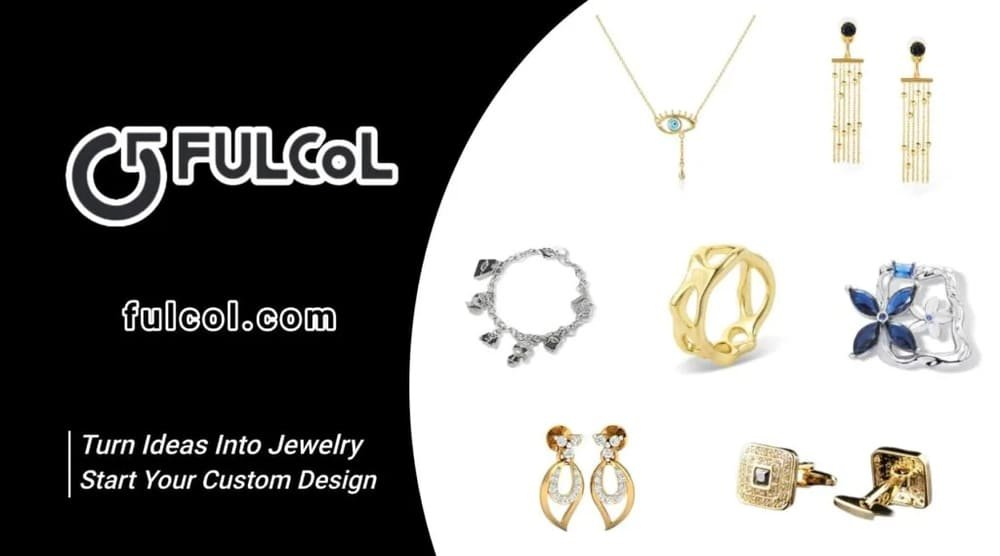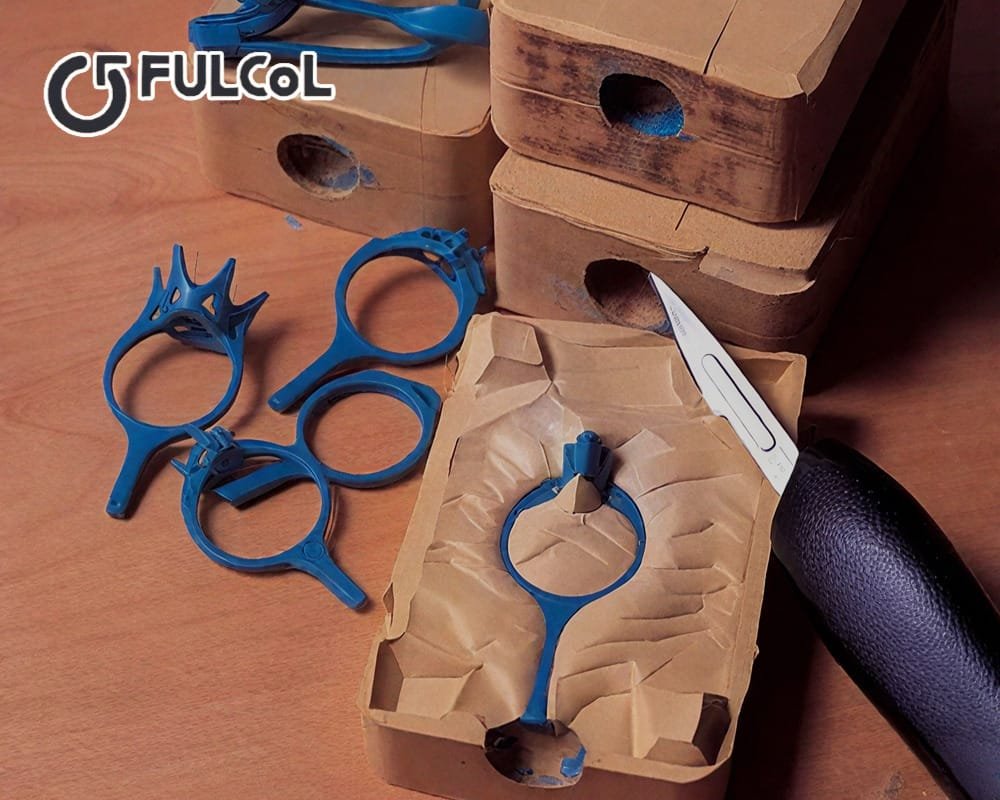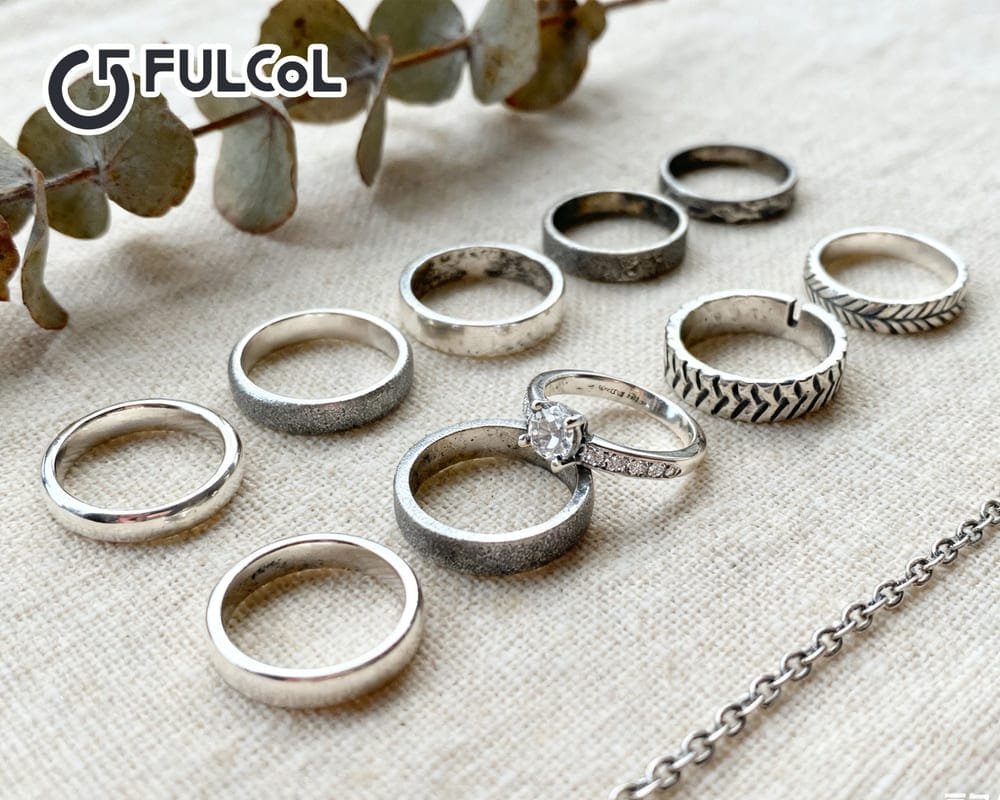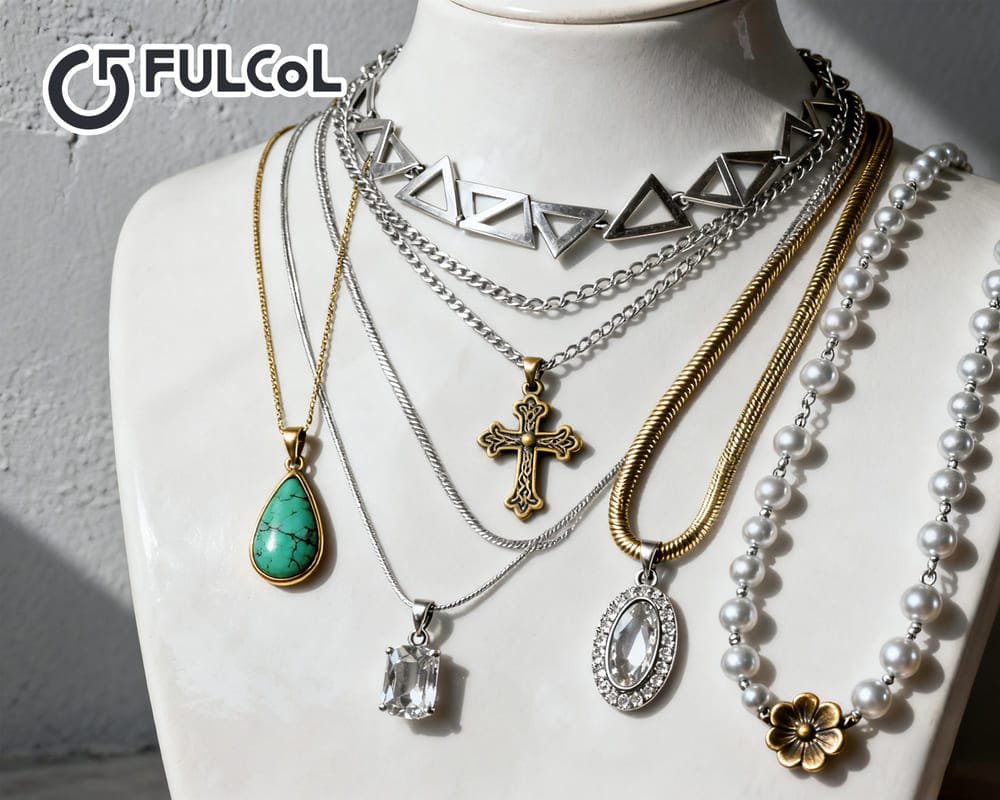Table of contents
- The Basics of Casting/Molding in Custom Necklace Manufacturing
- Fulcol’s expertise in custom necklace casting/casting
- Analysis of the Standard Casting/Molding Process (From Design to Finished Product)
- Common Problems and Solutions: How to Ensure High-Quality Casting/Molding
- How to Choose the Right Custom Necklace Manufacturer
In the custom necklace manufacturing process, two essential steps are casting and molding. These two processes are fundamental to jewelry manufacturing and crucial to the quality and detail of the finished product. Simply put, casting involves pouring molten metal into a mold to form the desired shape, while molding involves creating the mold for casting. These two processes are inseparable, like a painter and his canvas, each relying on the other to complete the final work of art.
Why are casting/molding so important? The reason is simple: the exquisite appearance, smooth surface, and strong structure of a necklace are all closely related to the precision of the casting process. Custom necklaces often require complex and unique designs, and the casting/molding process can faithfully reproduce these intricacies, ensuring not only beautiful pieces but also comfortable and durable wear.
As a custom necklace manufacturer specializing in jewelry made of materials such as silver and brass, Fulcol has extensive experience in casting and molding. With advanced craftsmanship, comprehensive equipment, and strict quality control, Fulcol not only meets the personalized needs of diverse customers but also earns their trust in the global market.

The Basics of Casting/Molding in Custom Necklace Manufacturing
To understand the importance of casting/molding in custom necklace manufacturing, it’s important to first have a clear understanding of both.
The Definition and Historical Background of Casting
Casting is one of the oldest techniques in jewelry manufacturing. Thousands of years ago, humans learned to create jewelry by melting metal and pouring it into molds. Many gold jewelry pieces from ancient Egypt, Greece, and China were created using the early lost wax method. In this method, a prototype of the jewelry piece is first created in wax, then covered with clay or plaster. Upon heating, the wax melts and flows out, creating a hollow mold into which molten metal can be poured. This process is still used today, and continues to evolve with modern technology to create more sophisticated versions.
The Function and Differences of Molding
Molding is a precursor to casting. Simply put, if casting is like “baking the cake,” then casting is like creating the baking mold. Only a precise mold can guarantee the cast necklace is perfectly detailed and accurately sized. Common molds used in modern jewelry manufacturing include plaster, rubber, and silicone, with different materials suited to different processes and metal types.
Modern Casting Methods
In contemporary custom necklace manufacturing, several common casting methods include:
- Lost-wax casting: The most common method, suitable for intricate details and small batches.
- Vacuum casting: Utilizes a vacuum to eliminate air bubbles, improving the density and smoothness of the finished product.
- Centrifugal casting: High-speed rotation allows the metal to better fill the mold, often used for small but highly detailed jewelry.
Each of these methods has its advantages, but the common goal is to accurately transform the design drawing into a real metal necklace.
Fulcol’s expertise in custom necklace casting/casting
In custom necklace manufacturing, the manufacturer’s expertise directly determines the quality of the finished product. As a leading manufacturer in the industry, Fulcol’s strengths are reflected in the following aspects:
Factory Equipment and Technical Capabilities
Fulcol is equipped with advanced casting equipment, including vacuum machines, centrifugal casting machines, and high-precision temperature control systems. These devices ensure metal stability during the melting and casting processes, reducing common problems such as bubbles and shrinkage, resulting in a more refined finished necklace.
Common Metal Materials and Characteristics
- 925 Sterling Silver: Its soft texture makes it suitable for everyday wear, but it is prone to oxidation during casting, requiring effective anti-oxidation measures.
- Brass: It offers a high cost-effectiveness and is often used for prototyping or light luxury jewelry, but it must be protected from surface roughness after casting.
Fulcol’s Process Standards and Certifications
As an export-oriented manufacturer, Fulcol strictly adheres to the ISO 9001 quality management system. Some of its products meet SGS testing standards, and Fulcol has also passed relevant environmental certifications such as RoHS and REACH. These standards not only enhance the international competitiveness of its products but also provide customers with greater peace of mind.
Real-World Case Studies
For example, a South American customer requested a custom batch of silver necklaces with a unique pattern. Fulcol completed the design using CAD software, then used 3D-printed wax models to ensure clear pattern details. The silver was then vacuum-casted, resulting in a smooth, delicate finish that has generated high customer satisfaction. This type of case study not only demonstrates Fulcol’s craftsmanship but also its ability to address complex needs.
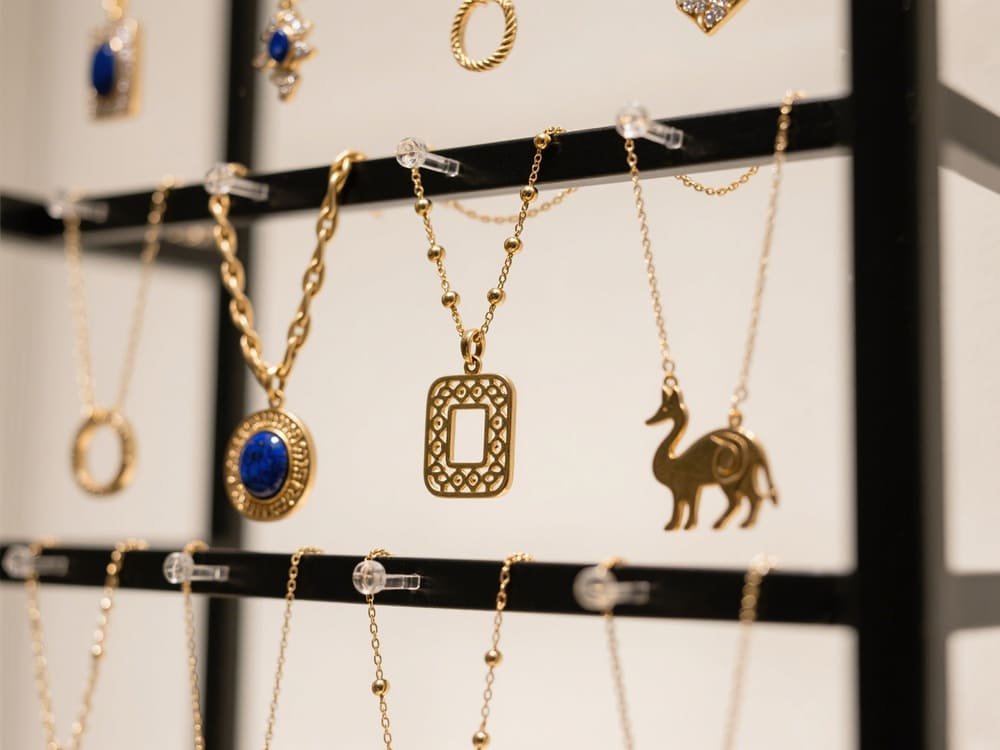
Analysis of the Standard Casting/Molding Process (From Design to Finished Product)
From drawing to finished product, a custom necklace undergoes a series of rigorous steps:
Design and Wax Model Production
The customer’s requirements are first converted into a 3D design file using CAD software. Modern wax model production often incorporates 3D printing technology, which offers higher precision and better reproduction of intricate details than traditional hand-carved wax.
Making the Mold
Common molds include plaster and rubber. Plaster molds are suitable for lost wax casting and can withstand high temperatures, while rubber molds are more suitable for mass-producing wax models. During the production process, attention must be paid to the thickness and uniformity of the mold, as otherwise deformation may occur in the finished product.
Melting and Pouring
Metal melting is a critical step. Too low a temperature prevents the metal from completely filling the mold, while too high a temperature can damage the mold. Professional factories typically have temperature control systems to ensure precise control. Depending on the design, the pouring method can be either vacuum or centrifugal to ensure even metal distribution.
Molding and Cooling
After pouring the metal into the mold, it needs to cool naturally or be accelerated by water cooling. This process determines the metal’s crystal structure and affects the durability of the finished product.
Polishing and Setting
The resulting rough necklace typically has a rough surface and requires multiple grinding and polishing steps to achieve a lustrous metallic finish. If gemstones are desired, professional setting is also required. Finally, the necklace undergoes quality inspection to ensure flawlessness before delivery.
Common Problems and Solutions: How to Ensure High-Quality Casting/Molding
Even experienced craftsmen can encounter problems during the casting process. Common ones include:
- Shrinkage: cavities caused by shrinkage in the metal as it cools.
- Blisters: small holes formed in the metal due to air not being expelled.
- Rough surface: A defect caused by mold quality or unstable pouring.
- Deformation: Shape deviation caused by uneven cooling.
Solutions to these problems include:
- Use high-quality plaster or rubber molds to ensure mold integrity.
- Use vacuum or centrifugal methods during pouring to reduce air entrapment.
- Control the melting and pouring temperatures to avoid excessively high or low temperatures.
- Maintain uniform cooling to avoid excessively rapid cooling in certain areas.
Recommended professional tools: Vacuum degassing machine, centrifugal pouring machine, and temperature-controlled melting furnace. These tools can significantly improve casting success rates and are a key difference between professional manufacturers and ordinary small workshops.
Fulcol’s factory is equipped with a full range of testing equipment, such as microscopes and X-ray inspections, to ensure that every necklace undergoes rigorous inspection before leaving the factory.
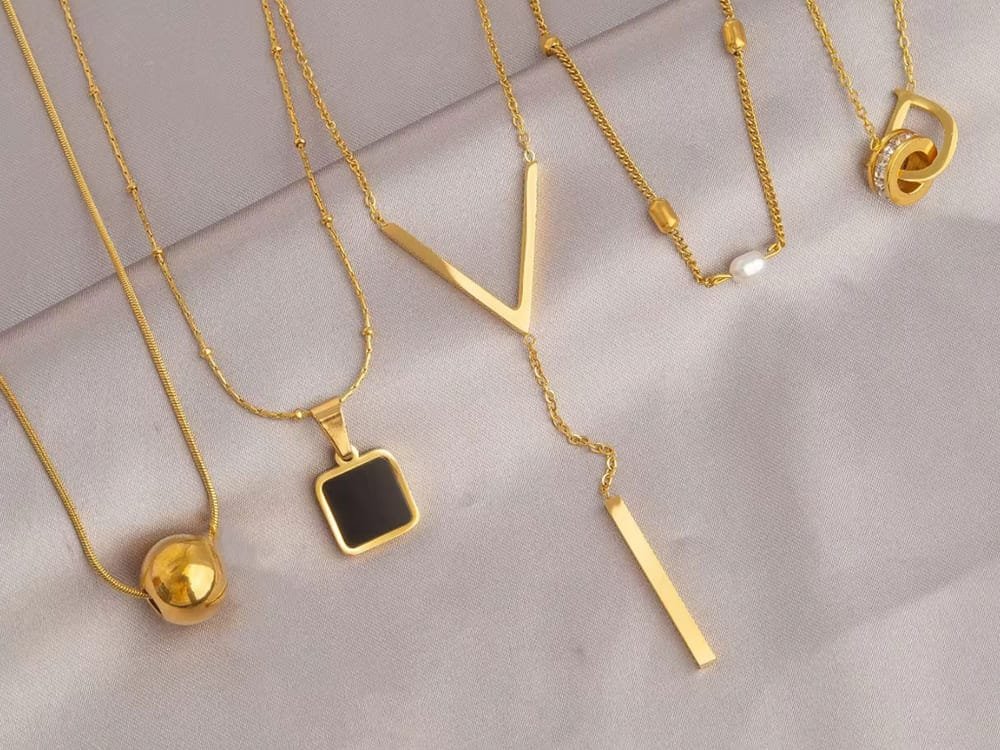
How to Choose the Right Custom Necklace Manufacturer
For customers, finding the right manufacturer is more important than the craftsmanship itself. Consider the following points when choosing:
Factory Capabilities
Advanced equipment and comprehensive process flow are key criteria for selection.
Craftsmanship and Certifications
Qualified manufacturers typically hold certifications such as ISO, SGS, and RoHS. This not only guarantees quality but also serves as a gateway to international market access.
Customer Case Studies
You can ask the manufacturer for past customer cases or samples to assess the craftsmanship through actual products.
Communication and Transparency
Excellent manufacturers maintain transparency in areas such as proofing, material confirmation, and pricing to avoid misunderstandings.
Fulcol excels in this regard. With years of experience working with clients in Europe, America, and South America, Fulcol not only meets custom needs but also provides continuous optimization services over the long term.
| Start Your Custom Order | Email: info@fulcol.com | Number: +86 13055603907 |
Casting/molding is the cornerstone of custom necklace manufacturing. Without high-quality molds and precise casting, a flawless necklace is impossible. This article demonstrates how every step, from design and molding to casting and polishing, significantly impacts the final quality.
As a professional custom brass jewelry manufacturer, Fulcol not only boasts advanced equipment and a team of experienced craftsmen, but also adheres to strict international standards to ensure that every necklace meets the highest customer expectations. Whether you’re looking for intricate, personalized designs or high-volume OEM orders, Fulcol offers reliable solutions.
For customers seeking a custom necklace manufacturer, choosing a partner like Fulcol, with its extensive experience, proven craftsmanship, and comprehensive service, ensures the final product is both beautiful and durable.
